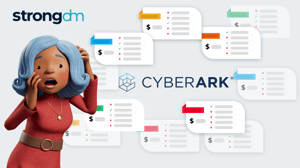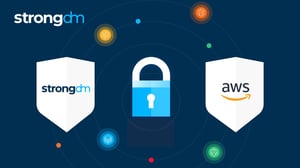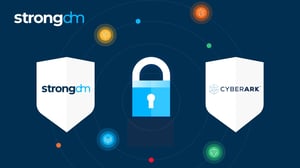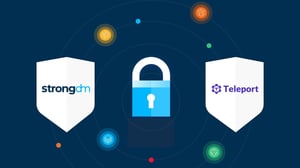
Written by
Schuyler BrownLast updated on:
September 29, 2025Reading time:
Contents
Built for Security. Loved by Devs.
- Free Trial — No Credit Card Needed
- Full Access to All Features
- Trusted by the Fortune 100, early startups, and everyone in between
Twingate started in 2019 in response to the growing challenges of managing access for a remote workforce. The product offers a zero-trust, cloud-based solution that aims to replace Virtual Private Networks (VPNs) by providing a secure, quick-to-implement solution for IT admins and everyday users. However, if you have a distributed workforce in need of access to databases, Kubernetes clusters, cloud CLIs, switches, routers, or internal web applications, there are other tools to consider. In this blog post, we’ll discuss the strengths and weaknesses of a few Twingate alternatives.
Twingate Overview
Brief product summary
Twingate is a remote access solution that aims to replace corporate VPNs. These VPNs create an encrypted channel between a user’s device and a company’s servers but can be riddled with security and performance problems.
Founders Tony Huie and Alex Marshall have taken lessons learned from their time at Dropbox and applied them to modern challenges around user access. Along with Lior Rozner, they offer Twingate as a zero-trust access solution that makes traffic segregation easier to implement than a VPN. Their product provides detailed audit logging and can identify and block unusual access patterns, adding a layer of security. Plus, it integrates with identity providers to ease usability and onboarding. It aims to minimize the pain around change management for developers, network admins, and DevOps teams alike.
Use cases
- Access control for staging and development environments.
- Managing access for vendors and contractors.
Pluses
- Offers zero-trust network access.
- Integrates with single sign-on providers.
- Simplifies management for IT admins.
- Provides real-time connection logs.
Minuses
- Follows a tiered pricing scheme.
- Detailed auditing only available at the Enterprise tier.
1. StrongDM
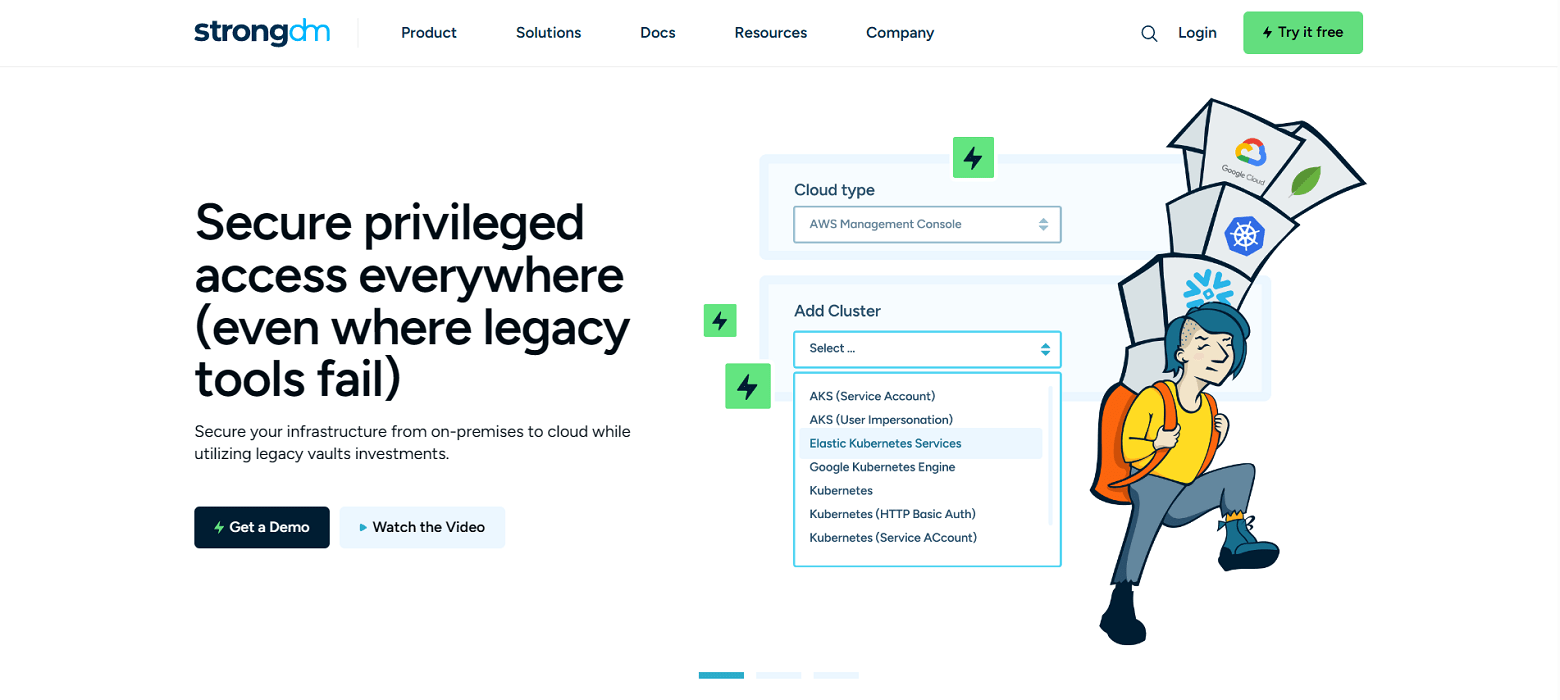
Brief product summary
StrongDM is a control plane to manage and monitor access to databases, servers, and Kubernetes. Their zero trust model means instead of distributing access across a combination of VPN, individual database credentials, and SSH keys, StrongDM unifies user management in your existing SSO (Google, Onelogin, Duo, Okta, SAML, etc...) and keeps the underlying credentials hidden. Neither credentials nor keys are accessible by end users. Because StrongDM deconstructs every protocol, it also logs all database queries, complete SSH and RDP sessions, and kubectl activity.
Use cases
- Faster onboarding- no need to provision database credentials, ssh keys, VPN passwords for each new hire.
- Secure off-boarding- suspend SSO access once to revoke all database, server access.
- Automatically adopt security best practices- least privilege, just-in-time access, audit trail.
- Comprehensive observability and visibility- log every permission change, database query, ssh & kubectl command.
- Vendor privileged access management-connect third-party vendors to resources with project-based access that automatically expires.
- Security and compliance teams-simplify HIPAA, SOC 2, SOX, ISO 27001 compliance certification.
- Modern Cloud PAM solution-built to support a variety of cloud networks, including public, private, multi-cloud, and hybrid.
Pluses
- Easy deployment - self-healing mesh network of proxies.
- No change to workflow- use any SQL client, CLI, or desktop BI tool.
- Standardize logs across any database type, Linux or Windows server, and Kubernetes.
- Graphical client for Windows and macOS.
- See and replay all activity with session recordings.
- Manage via a user-friendly web browser interface.
- SAML SSO included.
- Simple, straightforward pricing.
Minuses
- Requires continual access to StrongDM API for access to managed resources.
StrongDM’s G2 Reviews
- 4.8 / 5 stars
Read all of StrongDM’s G2 reviews here.

Pricing Information
StrongDM offers simple pricing, including support for all resource types.
Users have the option to sign up for a free 14-day trial.
2. Perimeter 81
Brief product summary
Perimeter 81 is a cloud-based Secure Access Service Edge (SASE) platform that provides centralized access to local networks, applications, and cloud resources. The company takes a security-first approach and aims to disrupt the VPN industry by offering a simple and scalable network access alternative for organizations of all sizes.
Businesses use Perimeter 81 to secure their remote workforce. IT Admins can build multiple groups and control team permissions using an intuitive user interface. The software then integrates with popular security information and event management (SIEM) tools to help you monitor and log network activity and protect your company’s resources.
Use cases
- Zero trust network access.
- Zero trust application access.
Pluses
- Implements security policies across the network.
- Secures remote access to a variety of resources.
- Access scales with your growth.
- Integrates with systems on all major cloud platforms.
- Provides fully audited access. Delivers a zero trust access model.
Minuses
- Resource intensive, causing performance issues.
- SSO integration is erratic.
- Commonly reported problems with disconnection.
3. Tailscale
Brief product summary
Tailscale is a zero-configuration virtual private cloud that builds secure networks for WireGuard-encrypted traffic. Tailscale replaces traditional VPNs with a coordination node that acts as a control plane to manage keys and identities. This allows you to create a secure network between cloud resources without the need for firewall configuration changes.
Tailscale is open-source software that scales from single users to enterprise environments in a way that is secure and easy to implement. It integrates with your existing identity provider, making it easy to enforce multi-factor authentication and off-board users who no longer need access.
Use cases
- Connect personal computing environments.
- Create secure point-to-point connections.
- Facilitate remote access from any physical location.
- Establish and enforce security access policies.
- Manage large-scale deployments.
Pluses
- Easy to configure and use.
- Provides audit-compliant logging.
- Integrates with your existing identity provider.
- Works with teams of any size.
- Protects your credentials with automatic key rotation.
Minuses
- Requires some networking expertise.
- The product is still in an early growth phase.
- RBAC is only available at higher-tier pricing.
- Okta integration is only available at higher-tier pricing.
- SAML SSO integration is only available at higher-tier pricing.
Next Steps
StrongDM unifies access management across databases, servers, clusters, and more—for IT, security, and DevOps teams.
- Learn how StrongDM works
- Book a personalized demo
- Start your free StrongDM trial


About the Author
Schuyler Brown, Chairman of the Board, began working with startups as one of the first employees at Cross Commerce Media. Since then, he has worked at the venture capital firms DFJ Gotham and High Peaks Venture Partners. He is also the host of Founders@Fail and author of Inc.com's "Failing Forward" column, where he interviews veteran entrepreneurs about the bumps, bruises, and reality of life in the startup trenches. His leadership philosophy: be humble enough to realize you don’t know everything and curious enough to want to learn more. He holds a B.A. and M.B.A. from Columbia University. To contact Schuyler, visit him on LinkedIn.
You May Also Like
